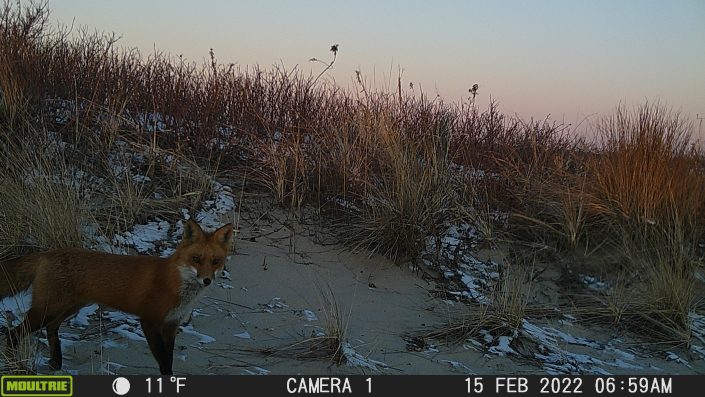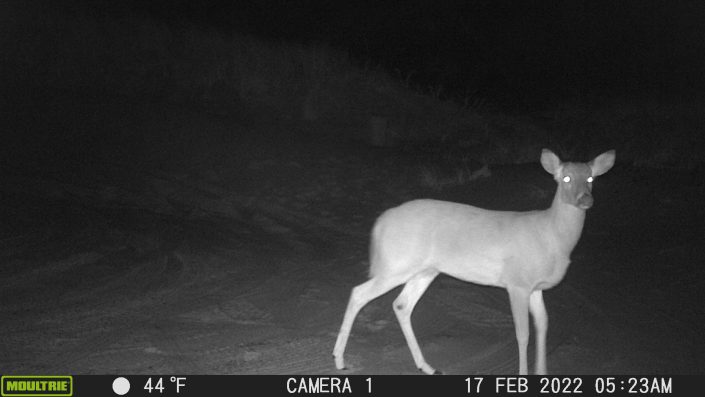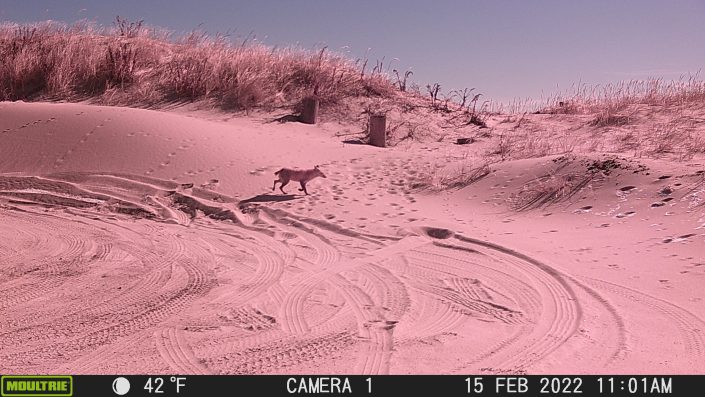Field Cameras Capture Mammal Population Data
by Sherry Tirgrath, Wildlife Biologist

The Conserve Wildlife Foundation of New Jersey (CWFNJ) has returned to the National Guard
Training Center (NGTC) in Sea Girt to continue their work surveying beach wildlife, conducting
vegetation control and providing rare species protection. One facet of the work done here is
using game cameras, deployed throughout the site, to remotely observe and monitor mammals
that utilize the area. CWFNJ has partnered with Vanasse Hangen Brustlin Consultants (VHB) and
the New Jersey Department of Military and Veterans Affairs (DMAVA) to gather data on the
species, number, movement and overall activity of mammals that are captured on the cameras.
This information is used for keeping records and to better understand the travel paths various
mammals take throughout the site.
The game cameras are triggered by motion, so they only capture an image when something
passes within range in front of the sensor. Because motion isn’t specific to just wildlife,
occasionally the cameras capture beachgoers, vehicles and moving vegetation. This means that
it’s important to position the cameras appropriately so that the SD card memory doesn’t
become crammed with “blank photos” caused by false triggers. Even weather can have an
impact on images that are captured: a bad windstorm once resulted in over 1000 blank photos
caused by the camera shaking on its mount. CWF is exploring the use of Google Photo’s
Artificial Intelligence tool to sort through and review the pictures in a more efficient manner.
This AI could potentially isolate photos with wildlife, domestic animals and people from the
blank photos. The SD cards are collected regularly to transmit images to a computer which are
later reviewed and analyzed to gather data. So far, a few different species have shown up
rather frequently on the NGTC cameras.
The most common mammal observed is red fox, followed by white-tailed deer and Virginia
opossum. These are all common species in New Jersey and it’s no surprise that they inhabit the
beach-front property around the National Guard Training Center. All the deployed cameras
captured wildlife which indicates that mammals traverse the site very frequently and utilize the
paths as predicted. Through careful analysis, CWF biologists can even roughly identify
individuals and come up with an approximate population number. For example, a fox with a
short tail has been seen on multiple game cameras so far and is easily identifiable. CWFNJ will
continue to monitor the game cameras and collect images throughout the rest of the year.
Some favorites have been shared below for the public to enjoy.



Discover more from Conserve Wildlife Foundation of NJ
Subscribe to get the latest posts sent to your email.